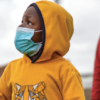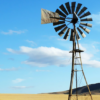
For better or worse, all of our careers are shifted, shaped and sometimes shortened by influential figures in our lives. When it comes to women in Science, Technology, Engineering and Mathematics (STEM) fields, access to support structures are even more important for growth and development. Unfortunately, many females still have to overcome barriers of prejudice and inequality.










